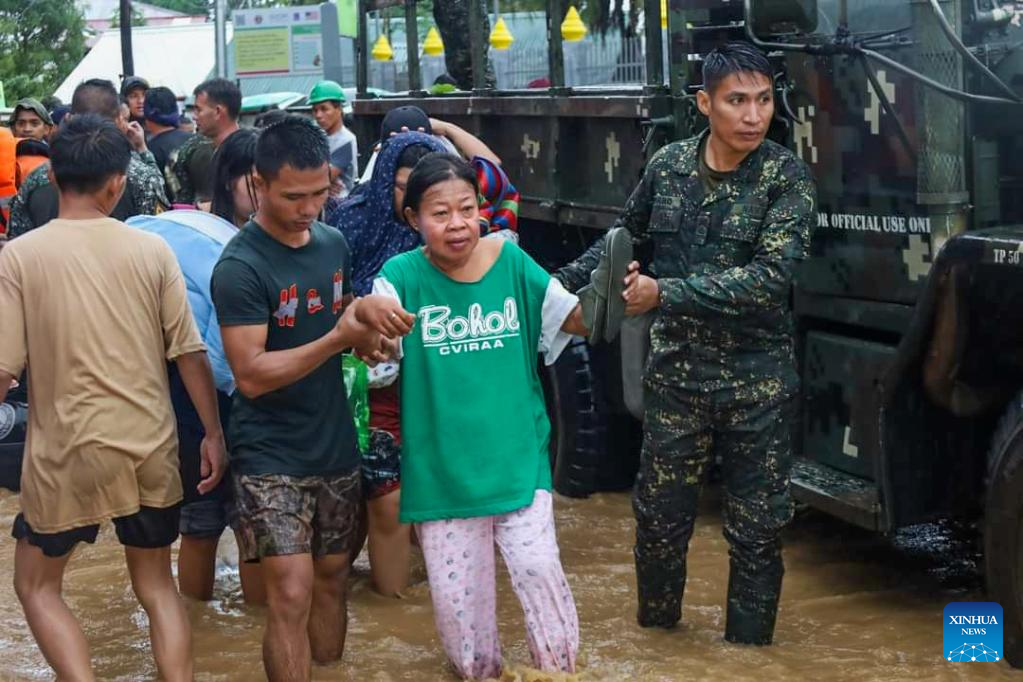Philippine authorities revise tropical storm Nalgae death toll to 45, 18 missing
 0 Comment(s)
0 Comment(s) Print
Print E-mail Xinhua, October 29, 2022
E-mail Xinhua, October 29, 2022

A spokesperson of Philippine national disaster agency on Saturday lowered the death toll caused by severe tropical storm Nalgae to 45, with 18 more remaining missing.
National Disaster Risk Reduction and Management Council (NDRRMC) spokesperson Bernardo Rafaelito Alejandro initially said 72 died from the storm, which was confirmed by the disaster agency in an official bulletin.
But in a later news conference at noon, Alejandro said that after verification with the villages, it was confirmed only 45 died, including 40 in Maguindanao province on southern Mindanao island, three in southern Soccksargen region, and two in the Western Visayas region in the central Philippines.
"The local government of Bangsamoro Autonomous Region in Muslim Mindanao (BARMM) overcounted," Alejandro explained, adding the victims in Maguindanao mostly died in landslides and some in flooding.
Maguindanao, a province of BARMM, is one of Nalgae's hardest-hit areas. BARMM Chief Minister Ahod Ebrahim said Saturday that the region is under calamity.
Alejandro said the 18 missing people include 15 from Maguindanao and three in Sultan Kudarat in the southern Philippines.
He said Nalgae has affected almost 185,000 people in eight regions, and over 8,000 people are staying in temporary government shelters.
As of noontime, 194 areas are still underwater, including 52 roads and bridges that are impassable. Over 5,500 ports suspended operations, Alejandro said.
Nalgae is the 16th tropical cyclone to lash the Philippines this year. It slammed into Catanduanes, an island province in the Bicol region, before dawn Saturday.
The Philippine Atmospheric, Geophysical and Astronomical Services Administration said Nalgae was blowing maximum winds of up to 95 km per hour and with gusts of up to 130 km per hour on Saturday afternoon.
In its latest bulletin, the state weather bureau said Nalgae was moving west-northwestward at 15 km per hour, and is forecast to cross Metro Manila and its adjacent areas Saturday afternoon.
The bureau warned flooding and rain-induced landslides are expected, especially in areas highly susceptible to these hazards and in localities with significant antecedent rainfall.
The Philippines is one of the most disaster-prone countries globally, mainly due to its location in the Pacific Ring of Fire and Pacific typhoon belt. On average, the archipelagic country experiences 20 typhoons yearly, some of which are intense and destructive.
In April, the tropical storm Megi dumped rains in central and southern parts of the Philippines, inundating many areas and causing landslides, resulting in over 220 deaths.






Go to Forum >>0 Comment(s)